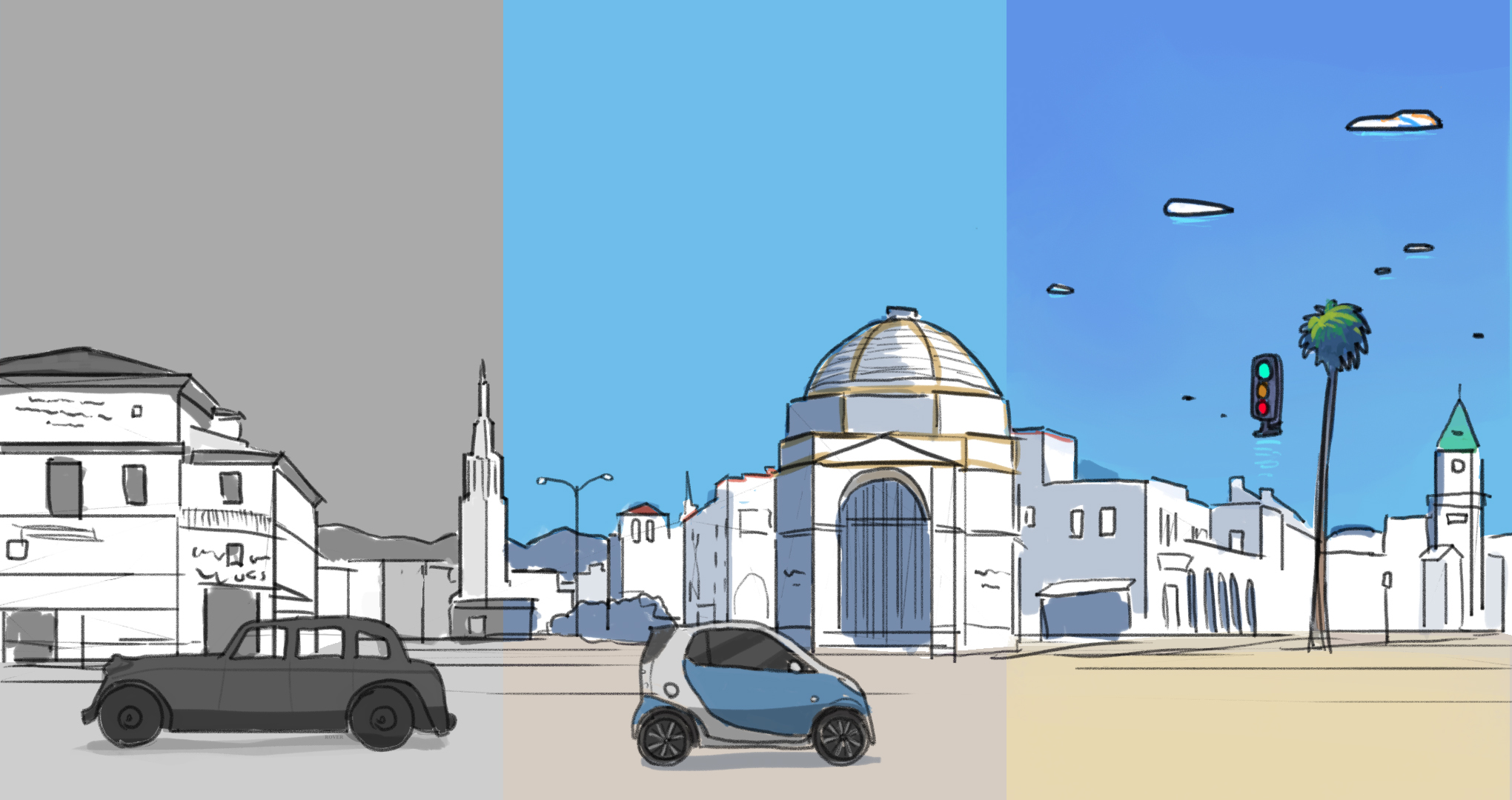Westwood’s competition: The rise and fall of the Village’s business

(Zeyu Ren/Daily Bruin)
By Roberto Luna Jr.
Nov. 9, 2015 5:56 p.m.
Editor’s note: Like many locals, I’ve shopped all around Los Angeles – the Grove, Santa Monica Place, the Beverly Center and a handful of other malls – but never in Westwood. In this second installation of a series on Westwood’s rise, decline and future, we look at Westwood’s business competitors.
Even though I’ve lived in Los Angeles my whole life, no one had ever asked me to hang out in Westwood Village until I got to UCLA. They would suggest Santa Monica or the Grove, but never Westwood.
After several months of being the city news editor at the Daily Bruin, I’ve developed a clear obsession and respect for the Village. So now, I ask myself: Why doesn’t anyone want to hang out in Westwood?
Westwood Village wasn’t the typical shopping center, and that’s what made it stand out. It was a series of city blocks where anyone could park their car and stroll around, glancing at the many storefronts and buying anything interesting they saw. A sign on the corner of Wilshire and Westwood boulevards in the 1940s described Westwood Village as “America’s most unusual shopping center.”
Then, by the late 1980s, it took a turn for the worse.
Some blame the gang-related shooting that left a bystander dead in 1988, saying this showed the declining safety in the area. But one should look for factors outside of Westwood as well – Westwood Village’s decline ran parallel to the rise of more hip, upscale shopping centers that only hurt the Village even more.

Businessman and real estate developer Rick Caruso, when he opened the Grove in 2002, tried to create an old-town nostalgic feel, complete with a fountain and trolley, in an outdoor mall. This, as well as a 14-screen movie theater, may be factors that compel more than 18 million customers per year to travel to the mid-Wilshire mall.
The manufactured atmosphere Caruso created makes customers feel like they themselves are rich, shopping in one of the most luxurious places. This model, which he has replicated in Glendale’s Americana at Brand and plans to do so in Carlsbad among other places, has granted him great success.
Similarly, Third Street Promenade tries to offer the same type of grandeur that the Grove does.
The center, operated by the city of Santa Monica, has began focusing more on chain stores instead of local businesses, garnering more than $300 million annually from 10 million customers. Its prominent location by the beach and its easy accessibility by bus or car makes it more appealing to customers than Westwood.
While these two malls thrive, others, such as the Westfield Century City, have decided to change in order to keep up.
A few miles from campus, the Century City mall is undergoing $800 million in renovations to add more open space, a plaza and make one-fourth of the mall dining. Westfield Group is doing this to distinguish its mall from other other centers, whose primary objective is retail. Westfield Century City’s proximity to Westwood, as well the amount of money that its private owner has at its disposal for revitalization, pose an economic threat to the Village.
These shopping centers have the crowds, the nightlife and appeal that Westwood Village once had. That, and a central vision.
The Janss brothers planned Westwood Village with the end goal of creating a shopping center that would serve UCLA students and residents. They made it stand out by creating a 170-foot tower atop the Fox Theater and bringing a flagship Bullock’s department store. Unlike today, it was a destination that people purposely decided to go to, not a place where they end up.
Even as market competition emerged in the 1980s, a decision of where Westwood should go hasn’t been made; rather, there are a number of conflicting opinions that have stunted its growth. Students’ desires for more fast-casual establishments and entertainment options conflict with some residents’ inclinations for more dine-in restaurants and a less vibrant nightlife.
Westwood Village, though, is not a shopping mall. It does not have the generic characteristics that a regular mall, or the new outdoor shopping centers, have. It can be different. It can be unusual.


